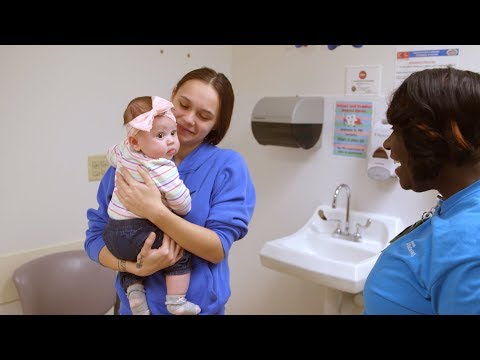A Medical Assistant’s Guide to Collecting Specimens for Testing
Contents
- Introduction
- What is a medical assistant?
- The medical assistant’s role in specimen collection
- What specimens are commonly collected?
- How are specimens collected?
- What are the best practices for specimen collection?
- How should specimens be handled after collection?
- What are the common errors in specimen collection?
- How can specimen collection be improved?
- Conclusion
A Medical Assistant’s Guide to Collecting Specimens for Testing
Collecting specimens for testing is a crucial part of the medical assistant’s job. Here’s a guide to doing it right.
Checkout this video:
Introduction
Working as a medical assistant you may be responsible for collecting various specimens from patients for testing. These specimens can include blood, urine, or tissue samples. It is important to collect these samples properly in order to ensure accurate test results.
In this guide, we will cover the basics of how to collect various types of specimens. We will also go over some of the common mistakes that Medical assistants make when collecting specimens. By the end of this guide, you should have a good understanding of how to collect specimens properly.
What is a medical assistant?
A medical assistant is a type of allied health professional that helps to support the work of physicians and other health care providers. Medical Assistants can be found working in a variety of health care settings, including physician offices, hospitals, clinics, and other outpatient facilities. One of the main duties of a medical assistant is to collect specimens for testing.
There are many different types of specimens that a medical assistant may be asked to collect, including blood, urine, and tissue samples. Depending on the type of specimen being collected, the medical assistant may need to use different techniques. For example, blood specimens can be collected through venipuncture or fingerstick, while urine specimens may need to be collected using a sterile cup or catheterization.
It is important for medical assistants to have a thorough understanding of how to properly collect specimens for testing. This guide will provide an overview of some of the most common types of specimens that medical assistants are asked to collect, as well as instructions on how to properly collect each type of specimen.
The medical assistant’s role in specimen collection
The medical assistant’s role in specimen collection is to collect specimens for testing and to prepare them for shipment to the laboratory.
Specimens must be collected according to specific instructions in order to be valid. The most common specimens collected by medical assistants are urine, stool, and sputum. Urine specimens can be collected via urine dipstick, urine culture, or clean-catch method. Stool specimens can be collected via rectal swab or fecal occult blood test (FOBT). Sputum specimens can be collected via expectoration or sputum induction.
In addition to collecting the specimen, the medical assistant must also ensure that the specimen is properly labeled with the patient’s name, date of birth, and date and time of collection. The specimen should then be stored at the correct temperature until it is ready to be shipped.
What specimens are commonly collected?
There are many different specimens that can be collected for testing, but some are more common than others. The most common specimens that medical assistants collect are blood, urine, and stool samples.
How are specimens collected?
There are many different types of specimens that can be collected for testing, including blood, urine, stool, and tissue samples. The type of specimen that needs to be collected will depend on the reason for the test.
Specimens can be collected in a number of ways, depending on the type of specimen being collected. Blood specimens can be collected via venipuncture or fingerstick. Urine specimens can be collected via midstream clean catch or catheterization. Stool specimens can be collected via stool card or direct specimen collection. Tissue specimens can be collected via biopsy or fine needle aspiration.
It is important to follow the proper procedure for collecting each type of specimen to ensure that the results of the tests are accurate.
What are the best practices for specimen collection?
There are many factors to consider when collecting specimens for testing, including the type of specimen, the patient’s condition, and the testing requirements. Here are some general best practices to keep in mind:
-Follow all safety protocols when handling specimens.
-Collect the specimen according to the instructions provided by the laboratory.
-Label the specimen clearly and accurately.
-Ensure that the specimen is properly preserved and stored.
-Transport the specimen to the laboratory as soon as possible.
How should specimens be handled after collection?
Specimens for testing should be placed in a container that is labeled with the patient’s name, date of collection, and type of specimen. The container should then be sealed and sent to the laboratory as soon as possible.
What are the common errors in specimen collection?
There are four main types of specimen collection errors: wrong patient, wrong site, wrong procedure, and misidentification.
Each of these errors can occur at any stage of the specimen collection process, from the initial patient encounter to when the specimen is finally labeled and sent off for testing. Let’s take a closer look at each type of error in turn.
Wrong patient errors occur when the specimens collected belong to the wrong patient. This type of error can happen if the medical assistant collects specimens from several patients in quick succession and becomes confused about which specimen belongs to which patient. Another common cause ofwrong patient errors is miscommunication between the medical assistant and the laboratory personnel who ultimately receive and test the specimens. To avoid this type of error, medical assistants should always double-check that they have collected specimens from the correct patient before moving on to the next patient.
Wrong site errors occur when the medical assistant collects a specimen from the wrong body site. For example, a common mistake is to collect a urine sample from a patients’ rectum instead of their bladder. To avoid this type of error, medical assistants should always be clear about which body site they are supposed to be collecting a specimen from before beginning the procedure.
Wrong procedure errors occur when the medical assistant fails to follow proper protocol for collecting a specimen. For example, some tests require that a specific amount of bodily fluid be collected in order for the results to be valid. If the medical assistant does not collect enough fluid, this will result in a wrong procedure error. To avoid this type of error, medical assistants should always be familiar with the proper procedures for collecting different types of specimens before attempting to collect them.
Misidentification errors occur when there is a mismatch between the specimen and the label attached to it. This can happen if the medical assistant incorrectly labels a specimen or if they attach the wrong label to a specimen. To avoid this type of error, medical assistants should always double-check that they are attaching the correct label to each specimen before sending it off for testing.
How can specimen collection be improved?
There are many ways in which specimen collection can be improved. One way is by improving the technique used to collect the specimen. Another way is by using a better quality specimen collection device. Also, specimen collection can be improved by using a more efficient method of specimen collection. Finally, specimen collection can be improved by increasing the number of specimens that are collected.
Conclusion
In conclusion, it is important for medical assistants to have a thorough understanding of how to collect specimens for testing. This guide has provided an overview of the essential steps that should be taken in order to ensure that specimens are collected correctly. By following these instructions, medical assistants can help to ensure that patients receive accurate test results.







